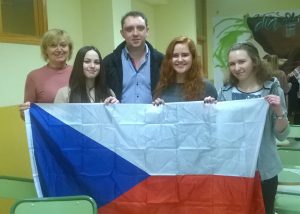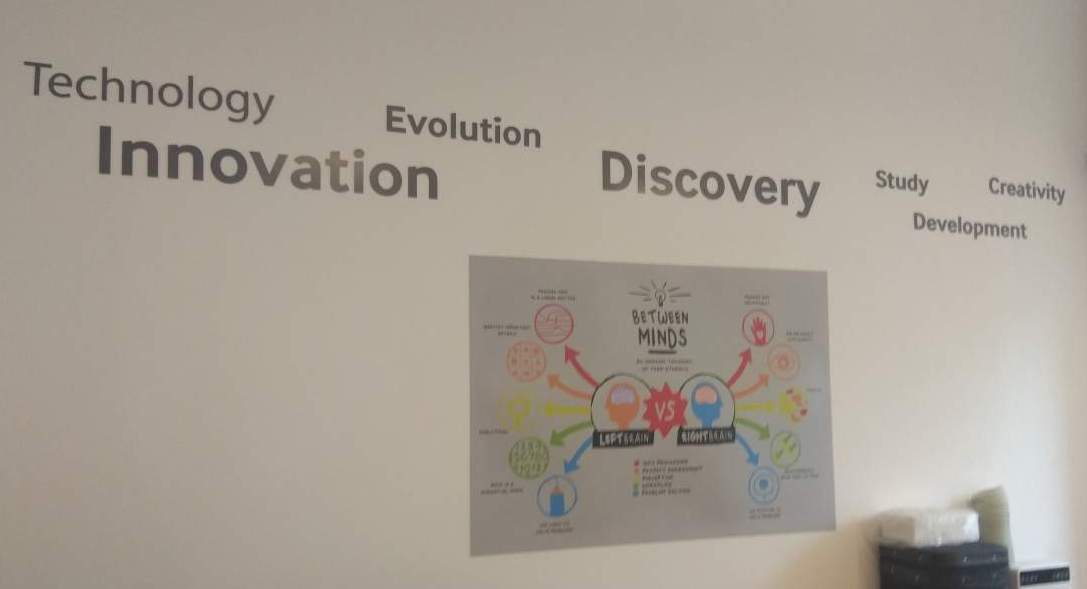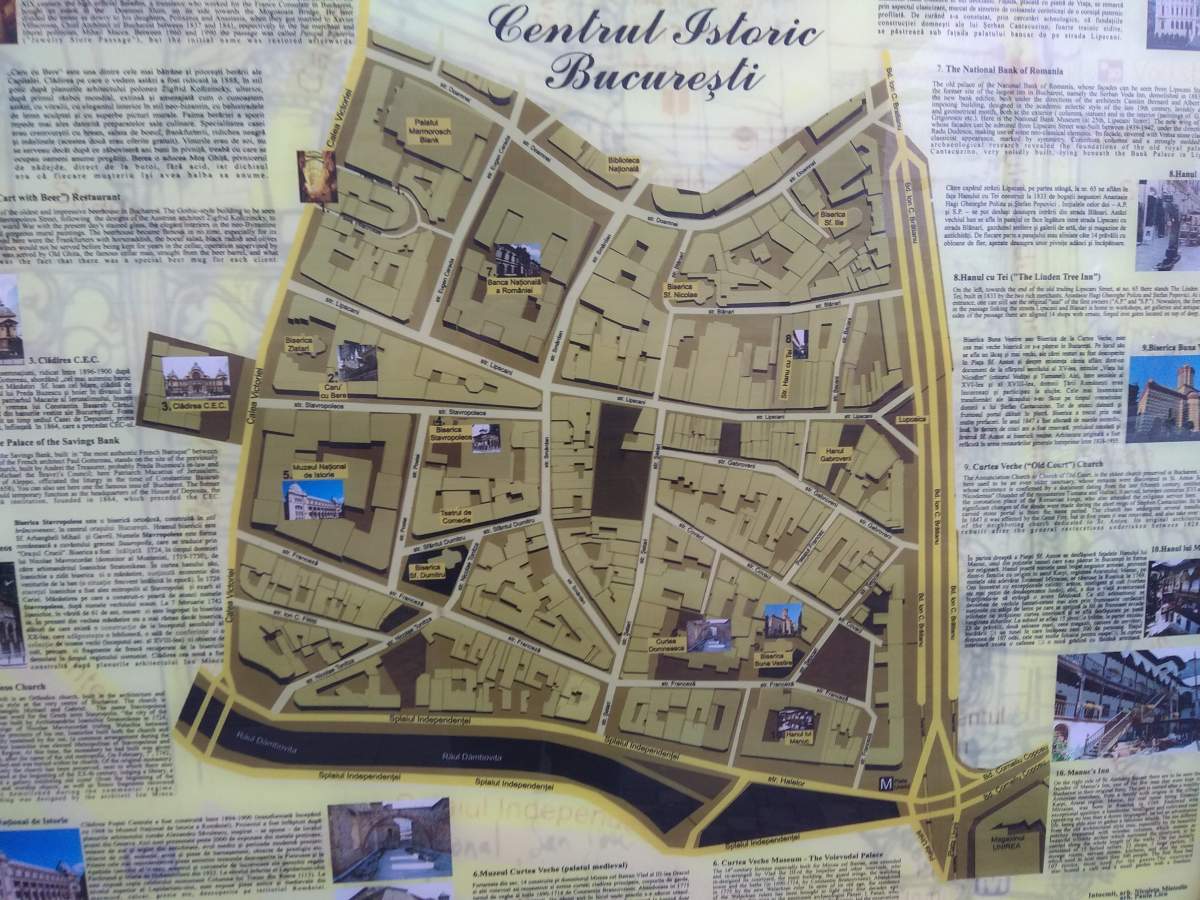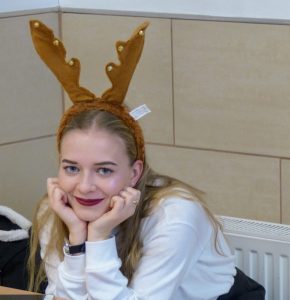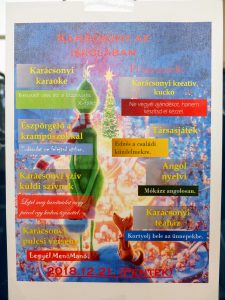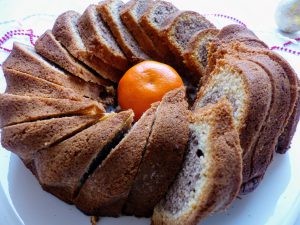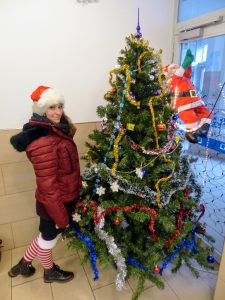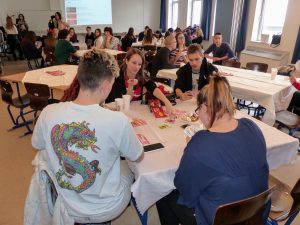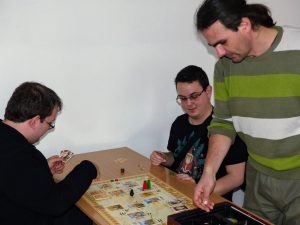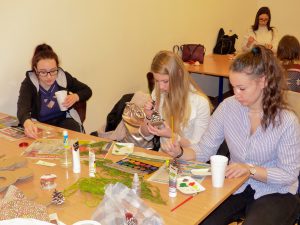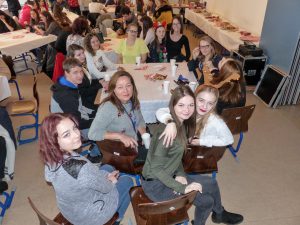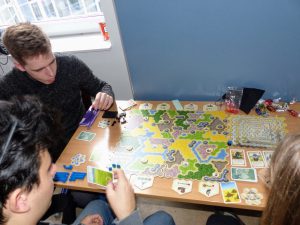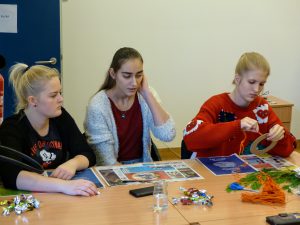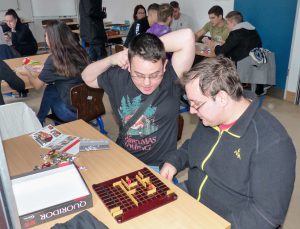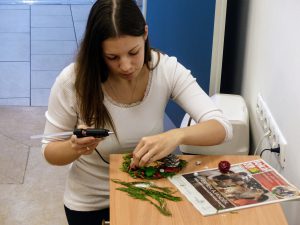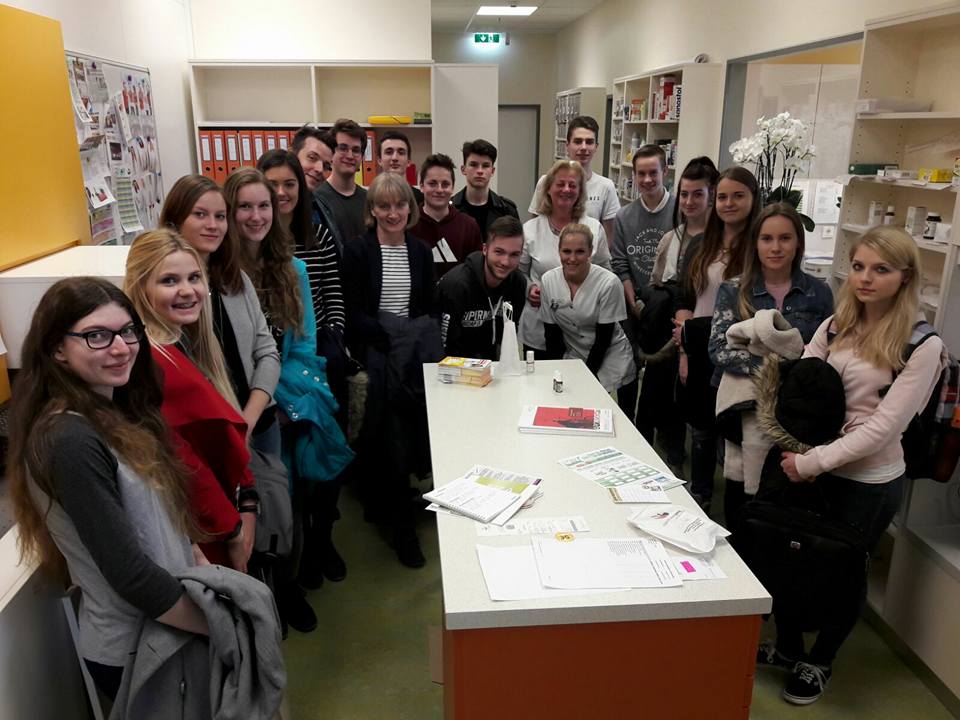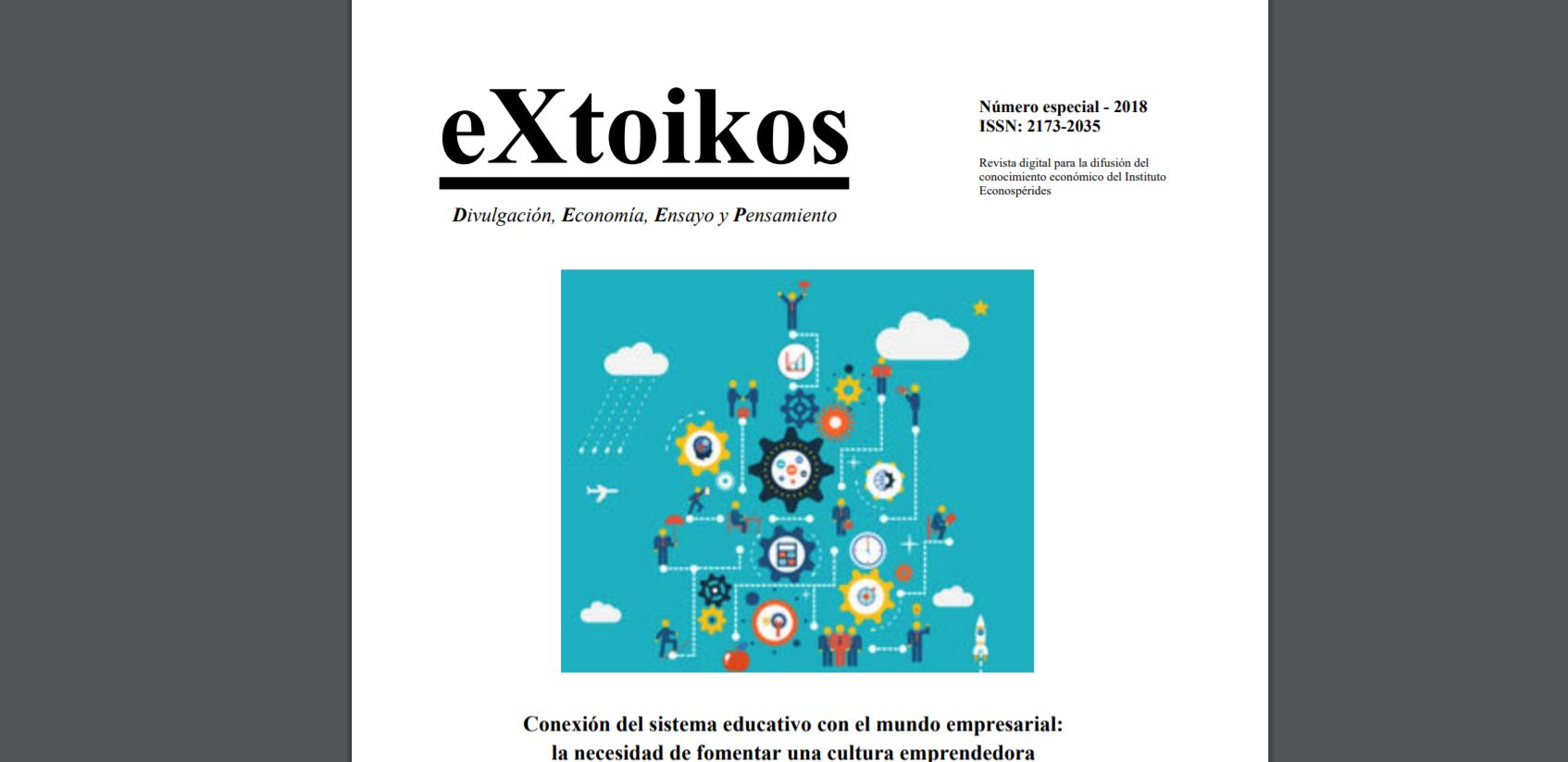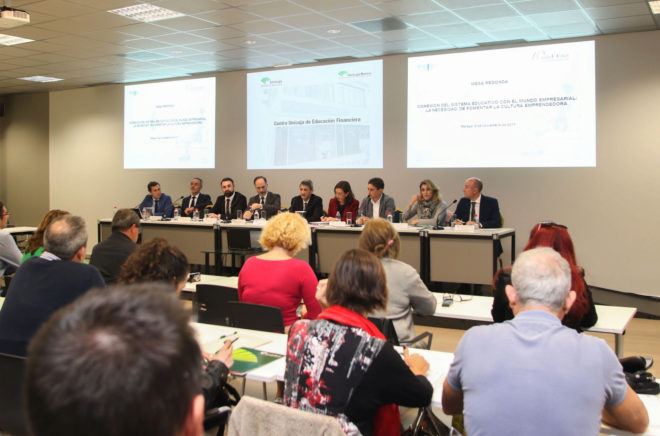Informations related to
C4 Collaborative Activity: Didactic Units as Open sources in education
One of the final products of this project is the creation of a set of Didactic Units in Open sources . n this activity, we detalied some common points about the development of the Didactic Units about financial education which will be developed by each team.

And the common ideas about Etwinning use of them.
We agreed to make the didactics units in Exelearning so that they could be easily reused and integrated in elearning modules like moodle.
C4 Visit of the Centre of Bucharest & Visit to Caru Cu Bere Historical Inn
Bucharest is a town with many possiblities and full of history.
Our colleges from the romanian team showed us the historical center and a his history and the Caru Cu Bere Historical Inn
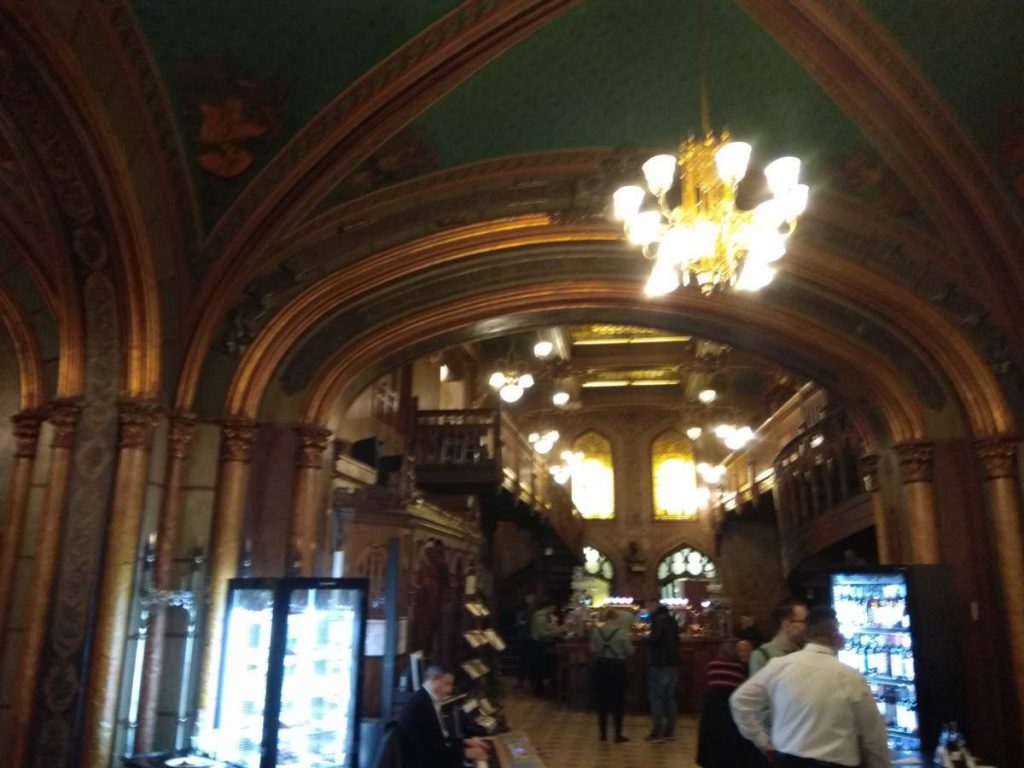
Caru Cu Bere Inn
C3 Spain International Congress Edufinet Congress
C3 Spain International Congress Edufinet Congress
In 23 , November 2018, The DTSE components have participated in the The Edufinet Financial Education Congress ‘Realities and Challenges’ as part of the programmed multiplicity events of the Erasmus project. This event has been followed by the students of the project by Skype platform.
http://www.edufinetcongress.com
This congress seeks to highlight the importance of financial education. For this, it is expected to have the participation of researchers and speakers from institutions of various fields involved in the development of financial education programs. In this way, different topics will be addressed, such as, for example, the challenges facing financial education, the possible actions to be carried out to enhance it, or the effectiveness of financial education programs.

It remains open the possibility of sending “papers” related to the subject, which will be submitted to the evaluation of the Scientific Committee of the Congress as a previous step, in its case, its dissemination in the same and its publication in the book of minutes.
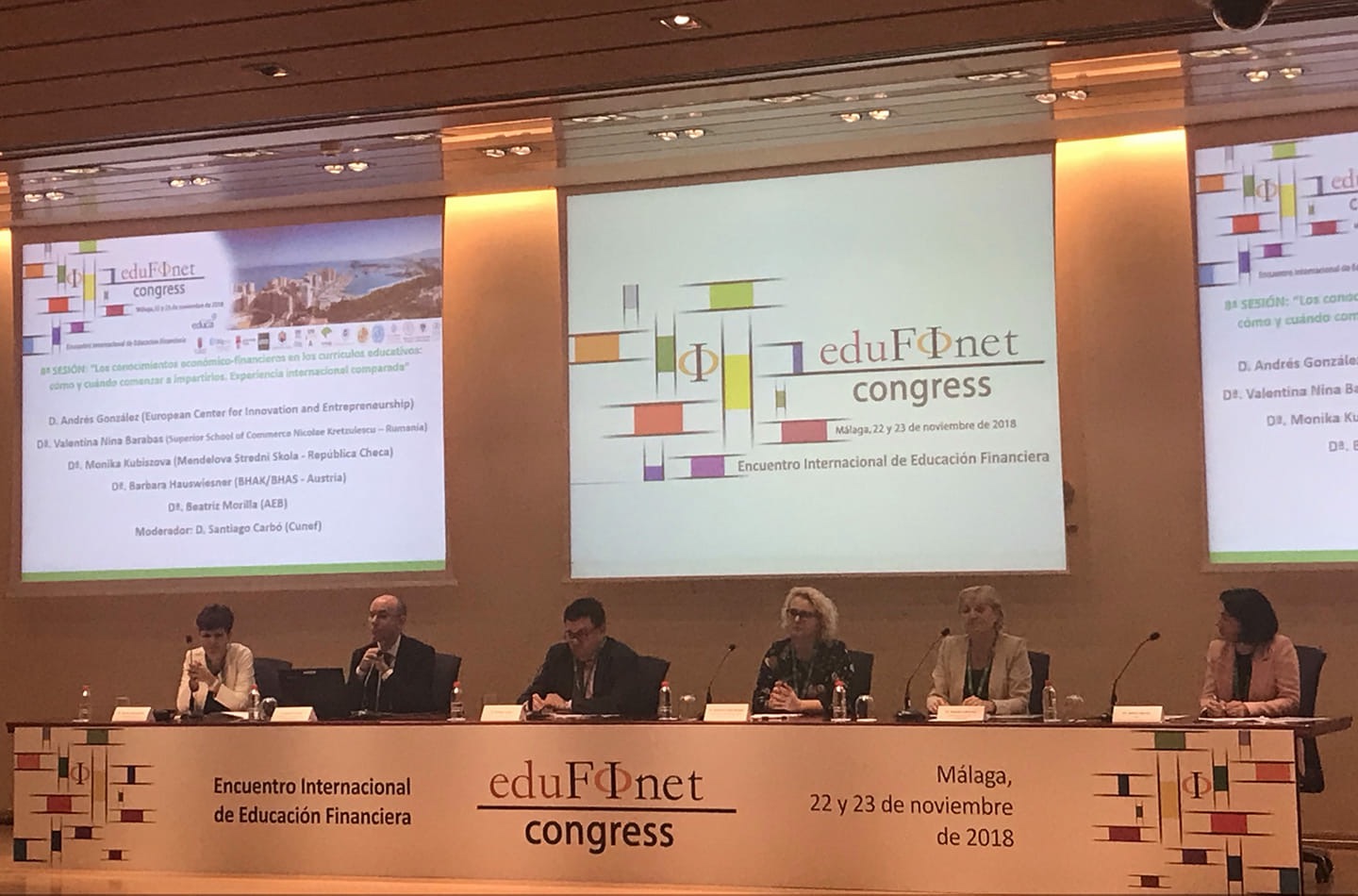
Our teachers has worked in the 8th Session: “Economic-financial knowledge in educational curricula: how and when to start imparting them. Comparative international experience “(Subject: economic-financial knowledge in the educational system / International experience). This session will be taught in English

Speakers of our team and its subjets
- Mr. Andrés González
- (European Center for Innovation and Entrepreneurship)
- “Analysis of the state of financial competition in young Europeans: a comparative vision”
- Mrs Valentina Nina Barabas
- (Superior School of Commerce Nicolae Kretzulescu – Romania)
- “Financial Education in Selected European Countries – from Kindergarten to University”
- Mrs Monika Kubiszova
- (Mendelova Stredni Skola – Czech Republic)
- “Financial Education in the Czech Republic and examples of good practice”
- Mrs Barbara Hauswiesner
- (BHAK / BHAS – Austria)
- “Financial Education in Selected European Countries”
- Mrs Beatriz Morilla
- (AEB)
- “Financial literacy as a life skill”
- Moderator: Mr. Santiago Carbó (Cunef)
Inteviews of the Teachers of the DTSE project in the Edufinet Congress
Mr. Andrés González
Mrs Valentina Nina Barabas
Mrs Barbara Hauswiesner
Mrs Monika Kubiszova
Impact of Edufinet Congress in the Mass media
This congress had a very important impact in internacional especialized Mass Media and regional newspapers like we can see in this links
10 de noviembre de 2018
La Nueva Crónica. 10 de noviembre de 2018
La Opinión de Málaga. 10 de noviembre de 2018
Málaga Hoy. 10 de noviembre de 2018
12 de noviembre de 2018
El Correo de Zamora. 12 de noviembre de 2018
19 de noviembre de 2018
20 minutos. 19 de noviembre de 2018
Europa Press. 19 de noviembre de 2018
Futuro a fondo. 19 de noviembre de 2018
Gente en Málaga. 19 de noviembre de 2018
La Nueva Crónica. 19 de noviembre de 2018
Teleprensa. 19 de noviembre de 2018
Zamora 24 horas. 19 de noviembre de 2018
20 de noviembre de 2018
La Opinión de Málaga (Digital). 20 de noviembre de 2018
El Correo de Zamora. 20 de noviembre de 2018
La Nueva Crónica. 20 de noviembre de 2018
La Opinión de Málaga. 20 de noviembre de 2018
Sur Digital. 20 de noviembre de 2018
21 de noviembre de 2018
Entrevista Director del Proyecto Edufinet. Estrategias de Inversión. 21 de noviembre de 2018
22 de noviembre de 2018
Agencia EFE. 22 de noviembre de 2018
Bolsamanía. 22 de noviembre de 2018
Crónica de Cantabria. 22 de noviembre de 2018
Diario de León. 22 de noviembre de 2018
Diario Siglo XXI. 22 de noviembre de 2018
El Diario Vasco. 22 de noviembre de 2018
El Economista. 22 de noviembre de 2018
El Economista. 22 de noviembre de 2018
El Obrero. 22 de noviembre de 2018
Eldiario.es. 22 de noviembre de 2018
Es investing. 22 de noviembre de 2018
Europa press. 22 de noviembre de 2018
Europa press. 22 de noviembre de 2018
Europa press. 22 de noviembre de 2018
Expansión. 22 de noviembre de 2018
Expansión. 22 de noviembre de 2018
Finanzas. 22 de noviembre de 2018
Finanzas. 22 de noviembre de 2018
Futuro a fondo. 22 de noviembre de 2018
Gente Digital. 22 de noviembre de 2018
Gente Digital. 22 de noviembre de 2018
Globalnews. 22 de noviembre de 2018
Hoy es. 22 de noviembre de 2018
La Razón. 22 de noviembre de 2018
La Rioja. 22 de noviembre de 2018
Murcia Diario. 22 de noviembre de 2018
Navarra Información. 22 de noviembre de 2018
Noticias Interbusca. 22 de noviembre de 2018
Profesionales hoy. 22 de noviembre de 2018
Sur Digital. 22 de noviembre de 2018
Te interesa. 22 de noviembre de 2018
Teleprensa. 22 de noviembre de 2018
Yahoo finanzas. 22 de noviembre de 2018
23 de noviembre de 2018
20 minutos. 23 de noviembre de 2018
Estrategias de inversión. 23 de noviembre de 2018
Europa press. 23 de noviembre de 2018
Europa press. 23 de noviembre de 2018
Gente Digital. 23 de noviembre de 2018
Teleprensa. 23 de noviembre de 2018
24 de noviembre de 2018
La Opinión de Málaga. 24 de noviembre de 2018
30 de noviembre de 2018
20 minutos. 30 de noviembre de 2018
Estrategias de Inversión. 30 de noviembre de 2018
Europa Press. 30 de noviembre de 2018
Europa Press. 30 de noviembre de 2018
Expansión. 30 de noviembre de 2018
Finanzas.com. 30 de noviembre de 2018
Gente Digital. 30 de noviembre de 2018
Infobolsa.es. 30 de noviembre de 2018
Interbusca. 30 de noviembre de 2018
Seriejoven.com. 30 de noviembre de 2018
Teinteresa.es. 30 de noviembre de 2018
1 de diciembre de 2018
Diario de León. 1 de diciembre de 2018
El Correo de Zamora. 1 de diciembre de 2018
La Nueva Crónica. 1 de diciembre de 2018
Arduino controlled pneumatic crushing machine
1. Introduction.
Technology evolves at an accelerated pace and companies must adapt to changes as soon as possible to generate a source of competitive advantage. The digitalization of the industry is a revolution that will change (and in fact is already doing) the paradigm of industrial manufacturing, work environments and the way of relating to both suppliers and customers.
We are at the doors of the 4th industrial revolution (Industry 4.0) and our education system must evolve to properly train future professionals.
New engineers and skilled workers will have to challenge this new era, using their skills to achieve more efficient management of resources, improve all production processes and increase profitability.
In the era of industry 4.0 and digital transformation, all young people will have to develop their talent, to foster a broad development of skills, attitudes and experiences both digital and innovation, entrepreneurship and creativity that prepare them competently for their professional future and favor your employability.
From this point of view, we find it necessary to give our students sufficient tools so that their integration into the workplace is successful and valuable for companies.
With the idea of taking another step, in the development of our project, we believe it is necessary to merge two technologies with great demand in the industry, Robotics and Pneumatics. With this, we managed to climb one more step and provide our students with the necessary skills to robotize an industrial silver.
These contents are included in the technology curriculum in 4th of that and in Industrial Technology in high school.

2. Objective and justification of the project.
“Every day, in the media, there is some news related to climate change, energy saving, depletion of raw materials, the need to recycle, …
What can we contribute to help solve this great problem that affects our entire planet? ”
This was the introduction with which a debate was opened in technology class and whose purpose was for students to become aware that we only have one planet and we must take care of it.
Many ideas came up, very good, but we focused on the importance of recycling.
The idea of manufacturing a machine to help recycle cans of soft drinks using the knowledge that students have of pneumatics and robotics was raised, and to study their feasibility to manufacture and install it, in various centers accompanied by a decalogue of Reasons why we should recycle.
With the development of this project it is intended that our students be able to:
Design, implement and program robotic systems.
Design and implement pneumatic circuits.
Encourage and actively participate in the recycling of containers.
Raise awareness about the need for energy saving and its impact on the environment.
Promote entrepreneurial culture.
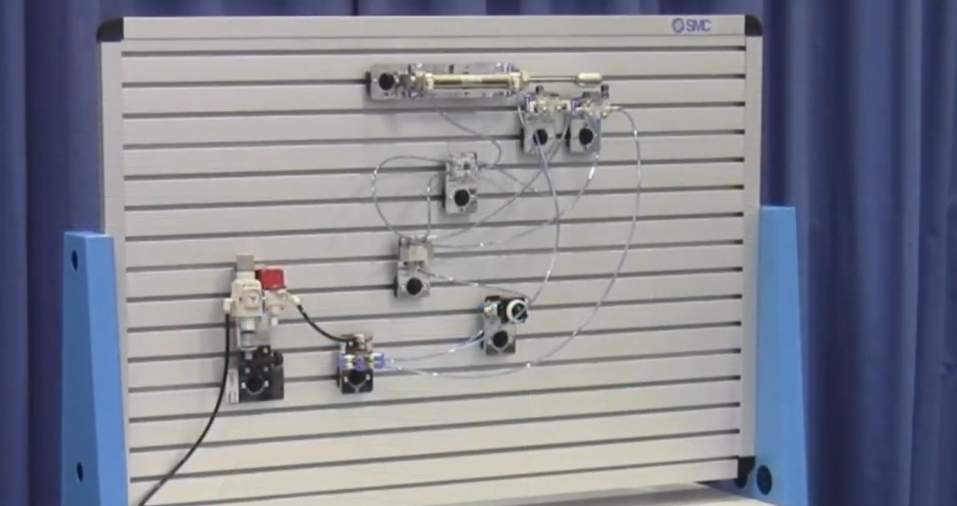
The knowledge necessary to develop a project of this type is present in the curriculum of technology (in 4th of that) and industrial technology 1.
The contents treated in 4th of that, related to the project are:
Block 4: Control and robotics.
4.1. Automatic systems, characteristic components of control devices.
4.2. Basic digital and analog sensors.
4.3. Actuators
4.4. Design and construction of robots.
4.5. Degrees of freedom.
4.6. Technical characteristics.
4.7. The computer as an element of programming and control.
4.8. Basic programming languages.
4.9. Architecture and basic characteristics of control hardware platforms, advantages of free hardware over proprietary.
4.10. Application of controller cards or control hardware platforms in experimentation with designed prototypes.
4.11 3D design and printing. MAKER culture.
Block 5: Pneumatic and hydraulic.
5.1. Analysis of hydraulic and pneumatic systems.
5.2. Components
5.3. Symbology
5.4. Physical principles of operation.
5.5. Simple assemblies
5.6. Use of simulators in the design of basic circuits.
5.7. Application in industrial systems.
For the 1st year of high school the following contents are treated:
Block 4. Programming and robotics.
4.1. Programming software
4.2. Flowchart and standardized symbology.
4.3. Variables: concept and types.
4.4. Mathematical and logical operators.
4.5. Structured programming: functions.
4.6. Control structures: Loops, counters, conditionals, etc.
4.7. Sensors and actuators. Types.
4.8. Inbound treatment
4.9. Programming of a hardware platform for handling a robot or control system.
Block 5. Technological products: design and production.
5.1. Design processes and product improvement.
5.2. Phases: study, development, planning.
5.3. Project development and product manufacturing. Phases: CAD / CAM / CAE.
5.4. Standardization in design and production.
5.5. Quality management systems.
Block 6. Manufacturing procedures.
6.1. Manufacturing techniques and procedures.
6.2. New technologies applied to manufacturing processes.
6.3. 3d print.
The main objective of this project is that our students become aware of the amount of energy and raw materials necessary to create a container and as with the recycling of these we can significantly reduce energy consumption.
To help with recycling, our students are asked to design and build a machine capable of compacting soda cans for storage and subsequent transportation to a recycling center.
The idea is to start from a very basic but functional model that will be improved until it is equipped with all the functions and safety measures necessary for safe use in schools.
This work methodology, known as an incremental model, allows students to see results quickly which motivates them to continue advancing in their objectives.
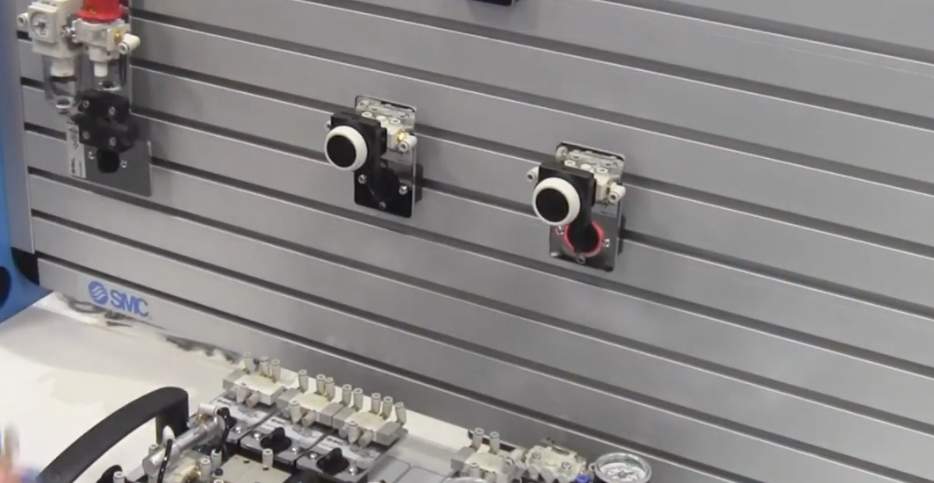
3. Basic example
For information purposes, since we want the students to design the machine, a scheme of a pneumatic circuit is provided that performs the function we are looking for.
This circuit needs to be improved, incorporating sensors and intelligent control through Arduino. These improvements will provide the model with safety measures that make its use suitable in a school.
Basically it is a single acting pneumatic cylinder controlled by a 3/2 valve with pilot operation via push-button and spring return.
Arduino will check if there are cans to crush, using ultrasound or infrared sensors, and actuate the cylinder through the use of relays.
In addition, the machine must have protective measures so that its use does not pose any risk.
4. Material necessary for the development of the project.
Once the circuit is designed and tested in virtual simulators, we need to assemble a prototype. For this, all pneumatic components that are normally supplied with pneumatic trainers (Cylinders, distribution valves, Compressor, Maintenance unit, solenoid valves… ..) will be used.
We show in the following images the necessary elements to assemble different designed prototypes.
As an element of control, an Arduino board and various sensors and actuators will be used. These elements will allow us to control the circuit and provide them with the necessary security measures.
The concretion of all the necessary material will depend on the designs that are made, due to this, it is necessary to have a complete equipment for the practices of pneumatic circuits in addition to various Arduino boards, sensors and actuators.
5. Methodology.
The methodology we are going to use is the Project Method.
Starting from a problem, students must seek information and propose several ideas that can solve it, once discussed in a group, the best idea is chosen and developed.
A first prototype is designed, and it is planned how we will build it, for this, a list of necessary materials and tools is made as well as the order of the operations to be carried out and who will perform them.
Once our prototype is built, we evaluate it and check if it solves our problem.
As you can see, the project method gives students the necessary tools to develop a product, which solves a problem or satisfies a need. All this knowledge can be extrapolated to everyday life and are highly valued in the workplace.
BGSZC ERASMUS+ INFODay
SZÁMALK-Szalézi Highschool and BGSZC organised ERASMUS+INFODay for the schools of Center in Budapest, in May.
Each school showed their project. During the meeting we shared our experiences and gave useful ideas to each other.
We gave presentations of our project ’Designthinking : Social – Entrepreneurship between European schools’under Erasmus+ programme.
The presentations gave good impulses to further activities to the other schools.

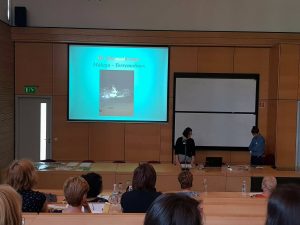
22.11. 2017 “20 years of training firms in Austria”
Ms. Ingrid Brodnig gave a lecture about “Social Media – Chances and Risks for Companies”. We invited our partner companies, students and teachers and important persons from local companies.

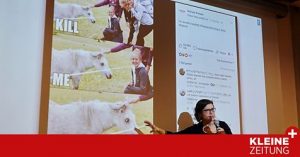
14.3. 2018 #YOUNGBUSINESSSCHOOL meets Pharmacy Weiz
Students oft he logistics branch oft he 4th form visited the Pharmacy Weiz to see their new logistics system live.


Meeting C1 in Torremolinos – view of students from the Czech Republic
From 21. 1. 2018 to 26. 1. 2018 we spend time with our teachers (Monika Kubiszova and Zdenek Matus) in Spain in the city named Torremolinos thanks of activities C1 – program Erasmus+. Some of us lived in Spanish families, others in a hotel but all of had the chance to communicate in foreign language with students and teachers from Spain, Romania, Hungary, Czech Republic, Austria and Italy. The whole week we were getting to know Spanish culture and taking part in workshops about social entrepreneurship. During the workshops we were working in groups and we had to talk in English. Besides Torremolinos we also visited Granada and Malága.
On the first day we were mostly at school working in different workshops (we learned for example the method CANVAS, coaching, the creating websites) There we discussed how to run business work together.
On Tuesday we went on trip to Granada, where we visited La Alhambra (medieval complex of places belonging to Arabic sovereigns), Parque de las Ciencias (interactive museum of science and technique), The centre of Granada and Mirador de San Nicolás with the beautiful view on the city.
On Wednesday we had another workshop named Financial education for entrepreneurs. The workshop was held in the financial centre of Malága and it was a presentation about finances in everyday life. We had participate actively because we voted in different cases to choose the right way how to solve financial problems. After the presentation ended we went to company Ingenia. That company has already 25 years. They told us how the company had grown up. After that we saw one of the greatest exhibitions in the museum Pompidú.
On Thursday morning we were at school again (workshops Podcast Radio and how to use E-twinning), then we had a class of golf, where we had a chance to try a traditional Spanish dish Paella.
Our last evening was very exciting because we had the opportunity to watch a basketball match between Spanish teams Unicaja and Baskonia. During our trip we gained a lot of experiences and it also gave us the opportunity to talk with people from other countries.
Jana Blažková, Lucie Skýpalová, Natalie Kladivová (students of 2.A)
